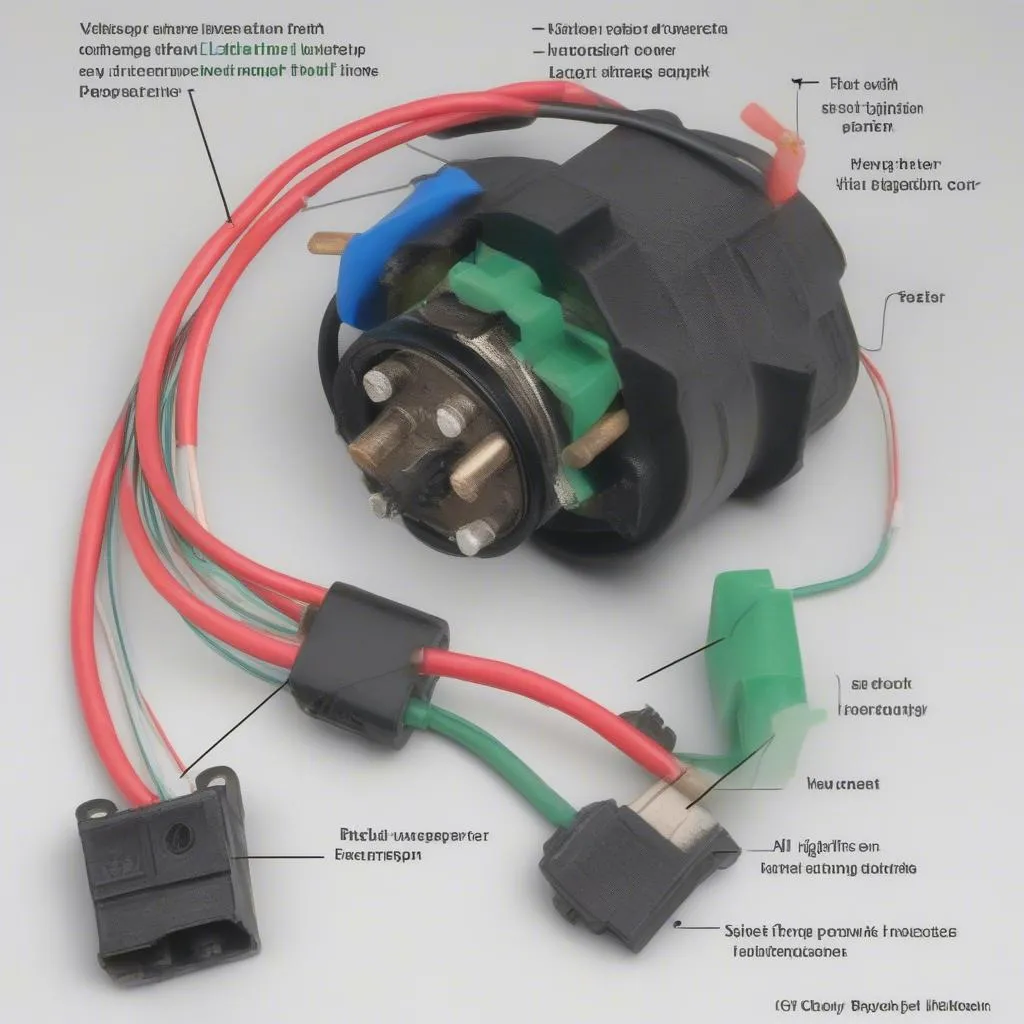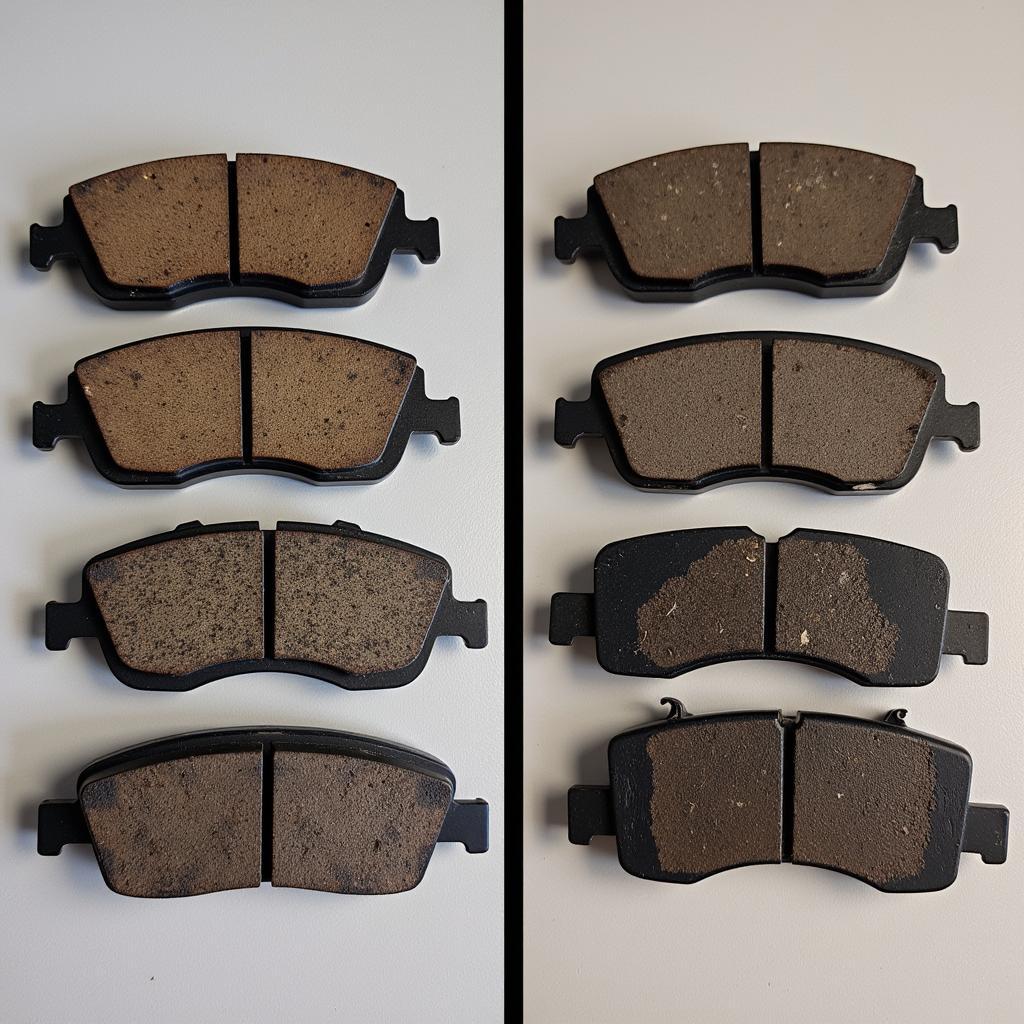Your 2006 Lexus IS250 is a fine machine, but when the brake, ABS, and traction control warning lights illuminate on your dashboard, it can be quite a concerning experience. These lights often signal a serious issue that needs to be addressed quickly. While it’s impossible to diagnose your car’s problem remotely, this article will guide you through potential causes and solutions for the warning lights you’re experiencing. We’ll delve into common culprits, the importance of proper diagnosis, and the steps you can take to get your IS250 back on the road safely.
Understanding the Warning Lights
Let’s start with a clear understanding of what each of these warning lights signifies:
- Brake Warning Light: This light indicates a potential issue with your braking system. It could signal a low brake fluid level, a problem with the brake pads or rotors, a faulty brake sensor, or even a malfunctioning brake booster.
- ABS (Anti-lock Braking System) Warning Light: This light illuminates when there’s a problem with the ABS system itself. It could be a faulty sensor, a problem with the ABS control module, or a wiring issue.
- Traction Control Warning Light: This light alerts you to a malfunction in the traction control system. It might be triggered by a faulty sensor, a problem with the traction control module, or even a worn tire.
Common Causes for the Lights to Illuminate Together
When all three warning lights come on simultaneously, it usually points to a common underlying cause. Here are some of the most likely suspects:
1. Low Brake Fluid
The most common culprit is low brake fluid. When brake fluid levels dip below the minimum, it can compromise the entire braking system and trigger all the warning lights.
Why is low brake fluid such a common problem? Brake fluid is designed to absorb moisture over time. This moisture can cause the fluid to become less effective and eventually boil, leading to brake failure.
2. Faulty Wheel Speed Sensors
Wheel speed sensors are critical for the ABS and traction control systems. These sensors monitor the speed of each wheel, and if they malfunction, the system can misinterpret the data and trigger the warning lights.
Signs of a faulty wheel speed sensor:
- ABS light comes on, but the brakes work normally
- The traction control system is intermittently active or inactive
- The vehicle pulls to one side during braking
3. ABS Control Module Malfunction
The ABS control module is the brains behind the ABS system. A malfunctioning module can lead to a variety of issues, including the illumination of the brake, ABS, and traction control warning lights.
Symptoms of a faulty ABS control module:
- ABS warning light stays on, even after driving for a short distance
- The ABS system is completely inactive
- The vehicle may experience brake problems
Importance of Professional Diagnosis
It’s essential to note that a diagnosis must be performed by a qualified mechanic. While these common causes are a good starting point, pinpointing the precise issue requires specialized equipment and expertise. A mechanic will use diagnostic tools to read the vehicle’s error codes and identify the root cause of the problem.
“A proper diagnosis is crucial in preventing further damage and ensuring your safety,” advises automotive technician, John Smith.
Troubleshooting Tips
While you shouldn’t attempt repairs yourself, there are some things you can do to help a mechanic diagnose the issue:
- Check your brake fluid levels: This is a simple check that you can perform yourself. If your fluid is low, it’s a good indication that the brake system needs attention.
- Inspect your brake pads and rotors: If your brake pads are worn down, they can cause the braking system to malfunction and trigger the warning lights.
- Make sure your tires are properly inflated: Underinflated tires can affect the traction control system, leading to the warning lights.
- Check for loose connections: A loose connection in the ABS or traction control system can cause the warning lights to come on.
Taking Action: Steps to Take
Once you’ve identified the issue, here’s what you need to do:
- Don’t ignore the warning lights: These lights signal a problem that needs attention. Driving with these lights on can be dangerous, as it can lead to brake failure or other problems.
- Contact a qualified mechanic immediately: A professional mechanic can properly diagnose the problem and perform the necessary repairs.
- Get your vehicle repaired as soon as possible: Don’t delay in getting your IS250 repaired. Driving with a faulty braking system is extremely risky.
Addressing the Problem: Solutions
The solution for your problem will depend on the specific cause. Here’s a summary of the most likely scenarios and their solutions:
- Low brake fluid: Your mechanic will replenish the fluid and inspect the system for leaks. If a leak is found, it will need to be repaired.
- Faulty wheel speed sensor: Your mechanic will need to replace the faulty sensor. In some cases, the wiring may also need to be repaired.
- ABS control module malfunction: The ABS control module may need to be replaced. In some cases, the issue can be resolved by simply resetting the module.
Getting Back on the Road
Once your IS250 is repaired, make sure to test it thoroughly before returning it to the road. Drive at different speeds and in different conditions to ensure that the braking system, ABS, and traction control are all working correctly.
“It’s always a good idea to have your braking system inspected regularly, even if you’re not experiencing any problems,” says automotive technician, John Smith.
FAQs
Q: How much does it typically cost to repair these issues?
A: The cost of repairs will vary depending on the specific problem and the repair shop you choose. However, you can expect to pay anywhere from a few hundred dollars to a few thousand dollars for repairs.
Q: Can I drive my car safely with these warning lights on?
A: It’s not recommended to drive your car with these warning lights on. It’s a sign that your braking system may be compromised, and you could end up in a dangerous situation.
Q: Should I use a specific type of brake fluid for my Lexus IS250?
A: Yes, Lexus recommends using DOT 4 brake fluid for your IS250. DOT 3 brake fluid can be used as a substitute, but DOT 4 is preferred.
Q: Will these warning lights ever turn off on their own?
A: No, these warning lights are designed to alert you to a problem. They will not turn off on their own. You will need to get your vehicle inspected and repaired.
Q: What should I do if I’m experiencing a sudden loss of braking power?
A: If you experience a sudden loss of braking power, pull over to the side of the road as soon as it’s safe to do so. Do not attempt to drive your car with a loss of braking power.


